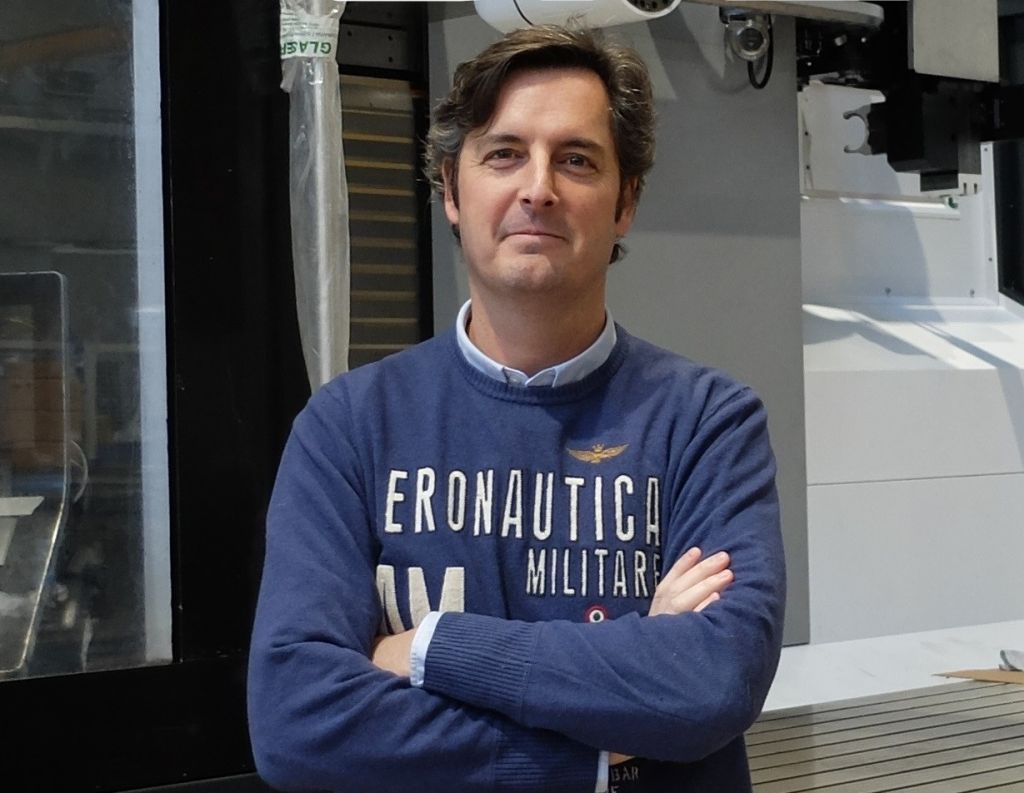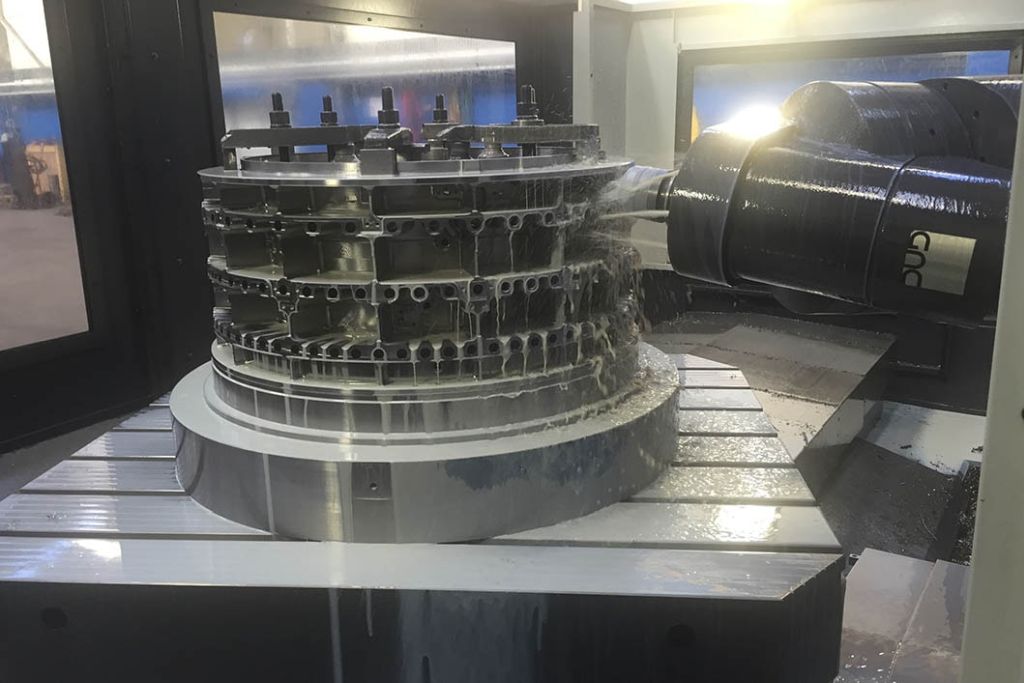Going large with aerospace milling

In this Q&A session, Ed Hill discusses the use of Nicolas Correa’s large volume CNC milling machines in the aerospace sector with marketing and applications director, Javier García Lopez.
Nicolás Correa is a Spanish manufacturer of machine tools with more than 75 years of history. Having evolved into specialising in large volume milling machines, its first 2-axis contouring head was built in 1996. This means that Correa has 27 years of experience producing 5-axis machines. Up till now, it has delivered more than 166 milling machines to the aerospace sector to companies all over the world.
Q) Which types of your machines are mostly used in the aerospace sector? What sort of tiers do they work in: OEM, Tier 1, 2, 3?
We supply bridge type (double column) machines both moving table and gantry type. We also manufacture bed type milling machines with rotary or turning tables integrated in the X-axis. When it comes to company tiers we generally supply to Tier 2 and 3 companies, sometimes Tier 1, only occasionally to OEMs.
Q) What sort of applications are these large volume machines used for in aerospace? What materials are they used to process?
Our bridge type machines are used for applications such as milling aluminium and titanium aerostructures, landing gear parts, carbon fibre moulds and other large size tooling. Our bed type milling machines are used for medium-sized tooling applications as well as engine parts.
Q) How do you engage with your customers working in the aerospace sector? Do they require machines with greater flexibility to win contracts and process orders?
We do not normally provide turnkey solutions in the aerospace sector since our customers are very specialised and have greater knowledge than ourselves about the parts they are making. However, we do provide what we call production support. It means that our application engineers start the production of the machine with our customers ensuring that firstly the machine and heads are used to their full extent in terms of cutting conditions, power-torque diagrams and manufacturing cycles, etc.

We also help with the integration of the new machining process, providing all the information (3D models, machine kinematics) needed to be sure that the machine is performing as fast as possible and to guarantee that everything can be simulated prior to real machining. This includes: CAM simulation, NC Code simulation and digital twins.
Flexibility is also a key factor for many of our customers in this sector. There is a huge variety of large volume parts in an aircraft of many different types, so our machines need to be flexible so the customer can reduce the payback period of their investment in our technology.
Q) Do you have to adhere to any specific aerospace certifications?
Machines manufactured in Europe must follow several ISO standards in order to be certified as a high precision milling machine. Moreover, the CE directive sets very rigorous standards in terms of safety.
Q) Is there much demand for automation of your machines in aerospace? How do you provide these kinds of solutions?
There is an increase in the demand for highly automated solutions even for large milling machines and the aerospace sector is no exception. However, the complexity of having many different parts with low production volumes makes these systems very complex and expensive with a large milling machine.
In these circumstances most aerospace manufactures utilise flexible manufacturing systems (FMS) where several machines operate at the same time using a comprehensive pallet changer to feed them and a software system to manage the whole installation. However, these kinds of installations are used more often for smaller parts and are still rare for large parts.
At Nicolás Correa we have increased our portfolio of automated solutions with developments such as automatic double pallet changers, automatic rotary multi pallet changers, shuttle multi pallet changers and more.
Q) How are you addressing developments such as Industry 4.0 and the Smart Factory? What future developments are in the pipeline for your machines and the company?
We started using IoT systems in our machines five years ago. Now, most of our machines use these using our cloud based or intranet-based VIXION system.

We are now also developing our data to define predictive algorithms to improve the reliability of the machines and their availability. Furthermore, we are introducing new software and hardware systems to offer our customers customised solutions for them to monitor their cutting tools in real-time, using laser codes on the tools and holders and getting real-time information from the IoT system. We are also developing solutions for measuring parts automatically before being processed in the machine, with the objective of reducing the setup times for large parts which are usually lengthy.
Q) What are the main focus areas of your current R&D developments, mechanics or software?
Apart from the software developments indicated above, we are implementing a new Correa Human Machine Interface (HMI) for Heidenhain TNC7 and Siemens One controls, trying to improve the user experience and increase the availability of the machine by helping the operator to identify and rectify problems in a matter of minutes. We are also developing new milling heads with unique features and new systems to minimise the thermal effects of changing environments at our customers’ facilities.
Q) Do you see trends such as electrification and hydrogen power as an opportunity or a hinderance to selling your machines?
Introducing electricity and hydrogen as a power source may lead to new designs of vehicles, trains, and aircraft, etc. New designs are always good for us because new large parts must be produced as well as new moulds, new tooling, new stamping dies, for example. Some large parts found in traditional engines will be reduced, however, there are great opportunities when it comes to large parts used in wind power generation and other sustainable energy applications.
Q) What differentiates Nicolás Correa machines from your competitors? The robustness of the machines and the milling head which results in a high cm3/min material removal rate guaranteeing productivity and stability. Also, the range of our milling head technology. We provide one of the largest milling head portfolios with the highest technical specifications. All our heads can be interchanged automatically in all our machines using the same system.
Additionally, very high accuracy, by implementing in our machines mechanical systems to make fine tuning adjustment of any angular errors in the machine’s movements due to the effects of gravity or any errors during the assembly process.
Lastly, reliability. Our high grade of vertical integration permits us to control most of the critical components of our machines. That is the reason we can give a five-year warranty on all our machines as standard.












